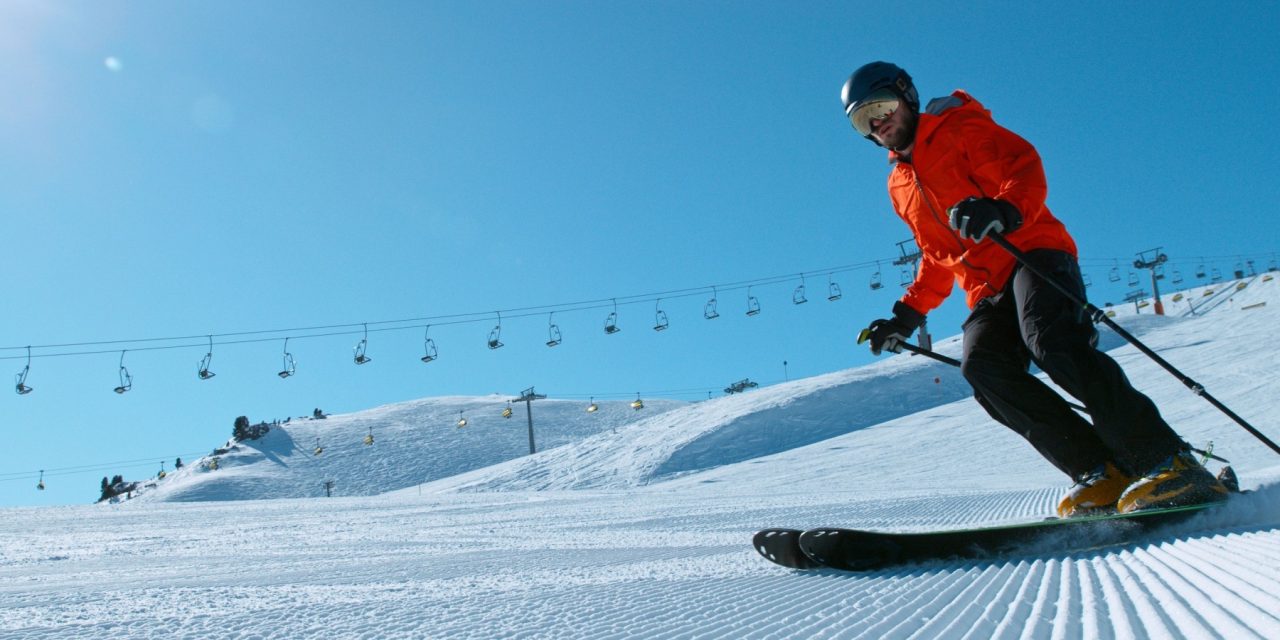Heading to the mountains soon?
Gear is half the battle. If you show up for your ski trip underprepared or with missing equipment, it totally ruins the experience. In fact, 9.9% of Americans enjoyed winter sports in 2024, and that number is increasing.
The good news?
A handy checklist is all you need to make sure you haven’t forgotten any essential items ahead of time.
Here’s a list of must-haves:
- Essential Equipment
- Safety Gear
- Clothing Essentials
- Useful Extras
Your Essential Ski Equipment
We’ll start with the main event – the gear that actually takes you down the mountain.
Skis, Boots & Bindings
The three parts that form the core of your ski setup. If you’re still in the market for a pair of skis (or want to upgrade your existing ones) this is the perfect time to buy skis designed for your ability level and the terrain you’ll be riding. The latest kit can make a big difference to your experience on the slopes.
Here are a few things to keep in mind…
Interestingly, your boots matter far more than your skis. They’re the interface between you and the equipment, so getting the fit right is way more important than anything else. They should be snug (but not painful) and allow a small amount of toe movement.
Bindings also need to be professionally adjusted to your weight, height, and ability level. Do not overlook this step. Binding adjustment can prevent serious injury during a fall.
Poles
Poles aid in balance and rhythm. Pole length is important here, too. If you hold the pole upside down under the basket your elbow should form a 90-degree angle.
Pro tip: Beginners often forego poles altogether during the learning process. That’s fine for your initial runs, but you’ll need them as you progress.
Safety Equipment You Need
Did you know…
Safety equipment is not optional. Helmet use increased from 25% in 2002 to 90% in the 2023-24 season. That’s a huge cultural shift, and for a very good reason.
Helmets Are Non-Negotiable
Research indicates properly fitting helmets reduce ski and snowboard-related head injuries by 60%. They cushion the impact of falls and collisions that otherwise would result in serious concussion becoming a minor injury.
When purchasing a helmet:
- Search for ASTM F2040 or CE EN 1077 certification.
- Ensure it fits snug with no gaps between the padding and your head.
- Helmet should cover your forehead and the back of your head.
- Chin strap needs to be tight enough you can only fit two fingers underneath.
One thing to keep in mind…
Helmets do not prevent all injuries, especially at speed. They are most effective for the usual falls on flat, packed snow surfaces. But they do provide a significant amount of protection against catastrophic head injuries.
Goggles & Eye Protection
Goggles protect your eyes from wind, snow, and harmful UV rays at altitude. Get a pair of goggles with interchangeable lenses if you can. One for bright sunny days and one for flat light conditions.
Make sure they fit snug with your helmet. Any gap between them allows cold air to leak in, which completely defeats the purpose of both items of equipment.
Clothing That Keeps You Comfortable
Layering is the key to warmth without overheating. Mountain weather changes quickly, so you need to have options built into your clothing system.
The Three-Layer System
Base Layer: This is the layer closest to your skin, and wicks moisture away. Avoid cotton at all costs – it traps sweat next to your body and makes you cold. Merino wool or synthetic materials are best.
Mid Layer: This is your insulation layer. A fleece or down jacket works well here. You may add or remove this layer throughout the day depending on temperature and exertion level.
Outer Layer: Your ski jacket and pants. Waterproof and windproof is key. Sealed seams and quality zippers matter. Vented jackets allow you to vent heat if you’re working hard.
Don’t Forget These Essentials
- Ski socks (one pair only – no double socking, which leads to blisters)
- Neck gaiter or balaclava
- Warm gloves or mittens (bring a spare pair)
- Beanie or helmet liner for additional warmth
People often overestimate how much they need to wear on the mountain. You are going to be active and generate heat. Start slightly cool and you’ll warm up as soon as you start moving.
The Extras That Improve Your Day
These aren’t absolutely essential, but they make your trip way more enjoyable.
Practical Additions
A small backpack lets you carry extra layers, snacks, and water. Dehydration happens faster at altitude, so drinking water throughout the day is important.
Sunscreen and lip balm with SPF are must-haves. The sun reflects off snow and you’ll burn faster than you think — even on cloudy days.
Hand and toe warmers can save a cold day. Throw a few in your pockets just in case.
Tech & Accessories
Your phone battery dies faster in the cold, so bring a portable charger if you plan to take photos or use GPS apps. Keep your phone in an inside pocket close to your body.
Consider a simple first aid kit with bandages, pain relievers, and blister treatments. Small injuries happen, and you don’t want them to ruin your day.
A helmet camera mount lets you capture your runs without holding anything. Just make sure it’s securely attached before you start.
Before You Go Checklist
Let’s keep this simple. Here’s your final checklist to run through before you leave:
Equipment:
- Skis (or rental confirmation)
- Boots
- Bindings (properly adjusted)
- Poles
- Helmet
- Goggles
Clothing:
- Base layers (top and bottom)
- Mid layer (fleece or insulated jacket)
- Ski jacket and pants
- Ski socks
- Gloves or mittens (plus a spare pair)
- Neck gaiter
- Beanie or helmet liner
Extras:
- Sunscreen and lip balm
- Snacks and water
- Small backpack
- Hand/toe warmers
- Phone charger
- Lift pass or ticket confirmation
Don’t forget:
- Valid ID
- Credit card
- Emergency contact info
- Any medications you need
Getting It All Together
The ski gear and equipment market is booming. Industry research reports the global market size at $16.55 billion in 2024 and growing. That means more choices than ever for high-quality gear across a wide range of prices.
You don’t need to overspend to get started. Rent equipment for your first few trips to discover what you like. After that, when you’re more committed to the sport, you can invest in your own gear that fits you well and matches your ability level.
Here’s my advice:
Safety equipment should be your first priority. A helmet and goggles that fit properly. Then boots. Everything else can be rented or borrowed while you figure out what works for you.
The aim is to spend less time on the mountain fiddling with uncomfortable gear or looking for forgotten equipment. And more time actually enjoying the mountain.
Pack smart, stay safe, and have fun out there!










